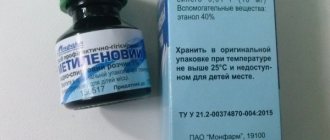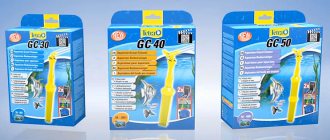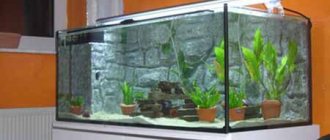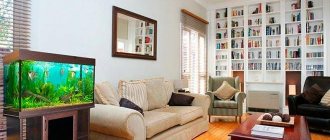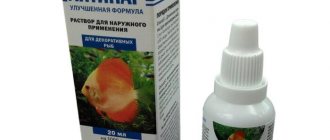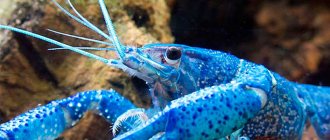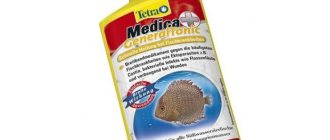In the aquarium industry, various drugs are used to treat and prevent diseases. These include methylene blue. It is a monofunctional product used for many purposes, such as disinfecting aquarium water or dyeing cotton. More information about the use of the drug methylene blue for aquariums and will be discussed in this article.
Methylene blue: application in the aquarium
Description of the drug
Methylene blue is a medicinal dye consisting of a dark green crystalline substance. The substance has bactericidal properties and is highly soluble in liquids, so it is used in various fields:
- For dyeing fabrics.
- In medicine for the treatment of certain ailments.
- In aquariums for treating fish and cleaning the aquatic environment.
Methylene blue is available in powder or crystalline form and is sold in pharmacies. For fish in aquarium keeping, an aqueous solution is used, which can be purchased at pet stores - the product is bottled in 50 ml bottles for ease of use.
Methylene blue is often used by aquarists to purify water and treat fish, since the drug allows you to quickly and effectively destroy parasites. However, in order not to harm your pets, you should know how to properly use blue aquarium conditioner.
Manufacturers recommend storing the product in a dark, dry place at temperatures up to 25C. It is important that children and pets do not have access to the storage area.
Aquarium use options
Methylene blue is one of the few products that every aquarist should have in their arsenal. This drug has a number of useful properties for any artificial reservoir and its inhabitants:
- Kills single-celled parasites;
- Treats fungal diseases and lesions of the mucous membranes of fish;
- Disinfects water and improves its quality;
- Fights the effects of cyanide poisoning;
- Promotes faster and healthier growth of caviar;
- Eliminates problems with tissue respiration in animals;
- Allows new fish to adapt more easily when introduced into the aquarium or when transplanted.
Indications for use and properties
The use of methylene blue in an aquarium allows aquarists to quickly and effectively disinfect the aquatic environment in the tank. The product can be added directly to the water to prevent disease and prepare the aquarium for new residents.
The undoubted advantage of the drug is that aquarium fish tolerate methylene blue well, since it is safe and sold at a favorable price. When used, the product has the following effects on the aquatic environment:
- Improves liquid quality.
- Eliminates fungal diseases.
- Cures against single-celled parasites.
- Promotes better development of caviar.
- Reduces stress in fish when moving to a new container.
Most experienced aquarists use methylene blue as a preventive measure when transporting and moving fish to a new tank to reduce stress in their wards. In addition, the drug also eliminates the possibility of pathogenic fungi and parasites entering the aquarium.
Blue in an aquarium is also used to treat such dangerous and common ailments as:
- Aeromonosis, or abdominal dropsy - with the development of this disease, pets become lethargic and inactive. Soon the fish lose their appetite, the affected fish swims along the bottom or lies down, the tummy swells, and large red spots form on the body.
- Branchiomycosis, or gill rot - the disease can be recognized by the following symptoms: fish lose activity and appetite, scarlet and dark stripes form on the gills. With further development of the disease, necrosis of the gills occurs, as a result of which they become dark gray in color.
- Gyrodactylosis is a disease of parasitic origin, and is provoked by fluke parasites. With the development of gyrodactylosis, the appearance of the fish undergoes dramatic changes: white mucus appears on the body and hemorrhages on the fins. Pets behave restlessly and refuse to eat.
- Tetrachymenosis - like gyrodactylosis, the disease is caused by parasites. The disease can be eliminated by using methylene blue.
Qualities of methylene blue conditioner
Among aquarium lovers, the drug in question is considered one of the mildest and most effective. It is easy to use; just follow the rules given in the instructions for use. The effects of air conditioning are varied:
- The drug kills parasites, fungi and protozoan bacteria that can cause the death of your pets. Disinfection of water occurs with the rapid destruction of parasites such as ichitophthirius and chylodenella.
- The conditioner also provides more active cellular respiration of fish tissues due to its donor-acceptance properties. As a result, the fish become less sensitive to various external adverse influences, and the process of caviar formation improves. It is especially important to restore the cellular respiration of aquarium inhabitants during prolonged oxygen starvation, which can occur, for example, during long-term transportation of fish.
- Blue aquarium conditioner copes with the task of disinfecting already laid eggs. If blue is added to the aquarium directly in fish food, the effect of the drug becomes milder and the incubation of eggs is accelerated. The fish eat the food with appetite, since the drug does not change the taste of their usual food.
- External injuries and negative changes in the condition of the fish are eliminated: the appearance of “fluff” on the surface of their body, cuts, deterioration in the appearance of scales, white spots, pimples and excessive mucus.
This drug can be used for both treatment and prevention of diseases. Methylene blue should be added to the aquarium in a certain way in order to obtain the desired result and not harm its inhabitants.
Disadvantages of using methylene blue
Before using methylene blue to eliminate ailments and prevent it, it is important to familiarize yourself with the disadvantages of using the drug in an aquarium. They are expressed in the following points:
- Deterioration of the condition and development of plant flora.
- Painting the walls of the tank in blue shades if the container is made of plastic.
- Coloring the soil if the substrate is light in color.
- Painting decorative elements from a light shade to blue.
To avoid such phenomena, aquarists have come up with an excellent solution: they use methylene blue for baths without pouring the solution into a common tank. To cure a sick fish, it is placed in a prepared container with blue conditioner. If the treatment must be carried out in a general aquarium, then light-colored decorations should first be removed from the tank. After completing the course, clean the walls of the aquarium.
Side effects
The greatest concern with methylene blue treatment is the development of Heinz body anemia
or other morphological changes in red blood cells, methemoglobinemia and reduced life span of red blood cells. Cats are most sensitive to these effects and therefore methylene blue is generally contraindicated in them, although dogs and horses are known to develop similar problems when given relatively low doses of the drug.
When the drug is administered subcutaneously, or if it enters extravascularly, necrotic abscesses may develop.
Instructions for use
To remove pathogenic parasites from the aquarium or carry out prevention, you need to add blue conditioner to the water at the rate of 1 drop/2.5 liters of liquid. You cannot drop the product directly into the water: the drug is first mixed in 100 ml of water, and then the prepared mixture is carefully poured into the aquarium in a thin stream. After a while, it is necessary to perform a partial water change and, if necessary, repeat the procedure, leaving the fish to swim in the aquarium with blue water for five days. After completion of treatment, the liquid in the reservoir is filtered through a carbon filter, or completely renewed.
If methylene blue is used for a marine aquarium, the following procedure must be followed:
- In a separate container, stir the blue solution at the rate of 1 ml/10 l of water.
- Patients in their care are removed from the common tank into a separate container with medicine.
- Treatment should last at least 3 hours, the procedure must be repeated every other day. The total number of treatments is 5.
To process and improve the development of eggs, experienced aquarists proceed as follows:
- The eggs are placed in a container with a blue solution for 2-3 hours.
- The dosage for preparing the solution is 1 ml/50 l of liquid.
The recommended dosage of the drug should be carefully observed, since if it is exceeded, there is a risk of killing the fish offspring.
Subtleties of use
It is difficult to prepare a blue antiseptic solution yourself, and therefore you need to buy an aqueous solution of methylene blue at a pet store. It is sold in a standard 50 ml bottle, which is designed for 100 liters of water. The blue must be stored in a cool place, protected from sunlight. When purchasing, you should pay attention to the expiration date of the product. It is better that there are at least 6 months left before its expiration. Instructions for use are included with the drug.
Therapeutic baths
Blue baths are good because they contain a high concentration of the drug, which makes it possible to eliminate diseases in a short time. The procedure is performed once for mildly affected fish, or twice with an interval of 2-3 days for a severe stage.
To prepare a therapeutic bath, settled water of a suitable temperature is poured into a separate container, after which the liquid is filled with oxygen using an aerator. Blue is added at the rate of 1.5 ml/1 liter of water, thoroughly stirring the product until the water turns blue. The length of time the fish stays in the bath is 30 minutes.
Notes
In different sources you can find discrepancies in the amount of the drug applied, despite the fact that the concentration of methylene blue may not be indicated in the instructions of the manufacturer of the aquarium medicine. For example, when adding the drug from AVZ, the water turns out to be much lighter than from Zoomir.
Dosages vary so much that it may seem like a mistake. AVZ recommends adding its methylene blue solution for five days in an amount of 2 ml per 100 liters of water. And in industrial fish farming, they generally make baths of 200 mg of powder per 1 liter of water for seven days!
If you understand treatment regimens from different sources, you can get confused. You shouldn't be scrupulous about this. The dosages are so free that with the acquisition of a little experience, methylene blue can be poured “by eye”, guided by the color of the resulting medicinal solution.
Precautionary measures
Methylene blue is a medicinal product, so when working with it you must follow safety precautions:
- Wear rubber gloves and avoid contact of the solution with bare skin and mucous membranes.
- It is prohibited to ingest the solution, smoke or eat during the procedures.
- After completing the treatment, the containers in which the solution was located are thoroughly washed.
- Empty bluing containers are disposed of.
Important information: blue should not be used in aquariums where large amounts of nitrogen compounds are present.
Methylene blue is an excellent and effective remedy that allows aquarists to properly care for their fish and promptly eliminate dangerous diseases. When using the product, it is important to adhere to the instructions for use and follow the recommended dosage.
What is the substance?
To understand what methylene blue is and what qualities it has, consideration of the external data of the drug and its properties and capabilities will help. This product of synthetic origin in its pure form is dark blue crystals, which can sometimes have a greenish tint. It is not resistant to light, so it is recommended to turn off the aquarium lighting when adding it to the water.
The qualities that blue has are fungicidal and disinfectant. Therefore, blue is widely used for the treatment and prevention of fungal and parasitic infections, disinfection and rapid healing of mechanical damage to fish tissue and restoration of their cellular respiration.
Doses of methylene blue for animals
Dogs use the drug in a dose:
To selectively stain pancreatic islet cell tumors:
- According to the instructions, methylene blue aqueous 3 mg/kg with 250 ml
of sterile isotonic solution is administered intravenously over 30-40 minutes during surgery. Initial staining of the tumor takes approximately 20 minutes after the start of the infusion, with a maximum of 25-35 minutes. The tumor usually stains reddish-purple against the dark blue background staining.
Why is it needed?
Air conditioners for aquariums remove harmful components from water, add useful ones, and turn it into a comfortable habitat for fish, amphibians, and plants.
Why are they so necessary:
Tap water has a complex composition.
It is poorly adapted for the life of fish, turtles, amphibians, and aquarium plants. In addition to chemical compounds introduced by humans, nature adds various metals, non-metals, salts, and acids to water.- Freshwater aquariums sometimes become overgrown with algae. The process becomes uncontrollable. Green, brown, black vegetation destroys the fish’s home.
- Over time, pathogenic bacteria and microorganisms appear in water. In addition, the inhabitants of the aquarium themselves produce toxic substances. Filters cope with fish waste, but are not capable of purifying water 100%.
Air conditioners are complex preparations.
The fight against harmful components is carried out not only by chemical methods. They contain agents that activate the work of microorganisms. Their purpose is biological water purification.
